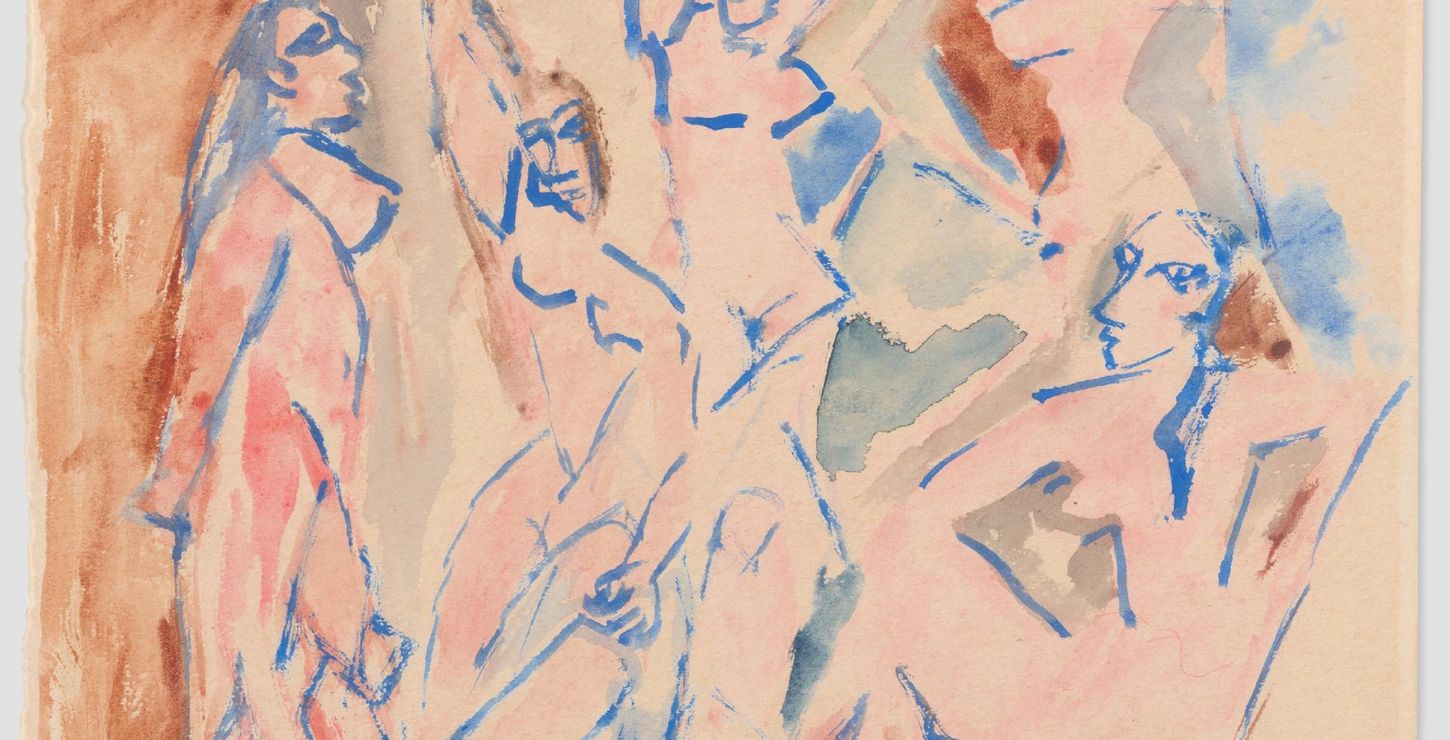Main Building
From his first one-man show in 1900 to the end of his life in 1973, Picasso recognized his draughtmanship as an essential part of his life's work. On seeing an exhibition of children's drawings Picasso revealingly said, "When I was their age I could draw like Raphael, but it took me a lifetime to learn to draw like them." Gary Tinterow, a graduate student in fine arts at Harvard University, has selected over 100 drawings, watercolors, gouaches, collages, and assemblages to illustrate Picasso's versatility as a draughtsman. The exhibition, which originated at the Fogg Art Museum at Harvard University, was drawn from 50 museums and private collections throughout the world, including the new Musée Picasso in Paris, the Museo Picasso in Barcelona, and the artist's heirs. The emphasis is on unfamiliar works, works from important periods, and finished drawings rather than preparatory studies. It is the first major display of Picasso's works on paper since the 1911 exhibition mounted by Alfred Stieglitz in New York. Mr. Tinterow has written in the exhibition catalogue, which has a preface by Jean Sutherland Boggs, Director of this Museum: "For Picasso, line was supreme . . . . The study of his draughtsmanship is the key for unlocking the complexity of Picasso's art." As the exhibition and catalogue demonstrate, there is no clear stylistic division between Picasso's drawings and paintings but rather a continuous flow of ideas, sometimes executed on canvas, sometimes on paper. This unwillingness to respect a strict hierarchy of mediums is one aspect of Picasso's work which has had a profound impact on other artists of this century. The study of these works on paper, which represent Picasso at his best, adds tremendously to our understanding of Picasso's work as a whole. The earliest works displayed are academic drawings, including several portrait studies Picasso made for his first one-man show in Barcelona. Another series of drawings documents the dramatic change in the artist's style which took place in late 1906, the most famous outcome of which was Les Demoiselles d'Avignon. The sequence includes The Peasants of Andorra, several versions of Two Standing Nudes, one of which belongs to this Museum, and studies of the sailor who was deleted from the final versions of Les Demoiselles. A gouache study for the final composition is from this Museum. Cubist works include a rare Analytic Cubist drawing of 1911, Man with Pipe, and a selection of collages, such as the magnificent Violin of 1912. Picasso's fascination with interpreting the works of earlier artists is represented by versions of Manet's Déjeuner sur l'herbe and Rembrandt's Bathsheba. The final work in the exhibition, Self-Portrait of 1972, is a rare confrontation by Picasso with his own mortality in a work of art. Master Drawings by Picasso is a powerful record of one of the finest draughtsmen of our times.
Itinerary
Fogg Art Museum, Cambridge, Massachusetts
Art Institute of Chicago
Philadelphia Museum of Art
